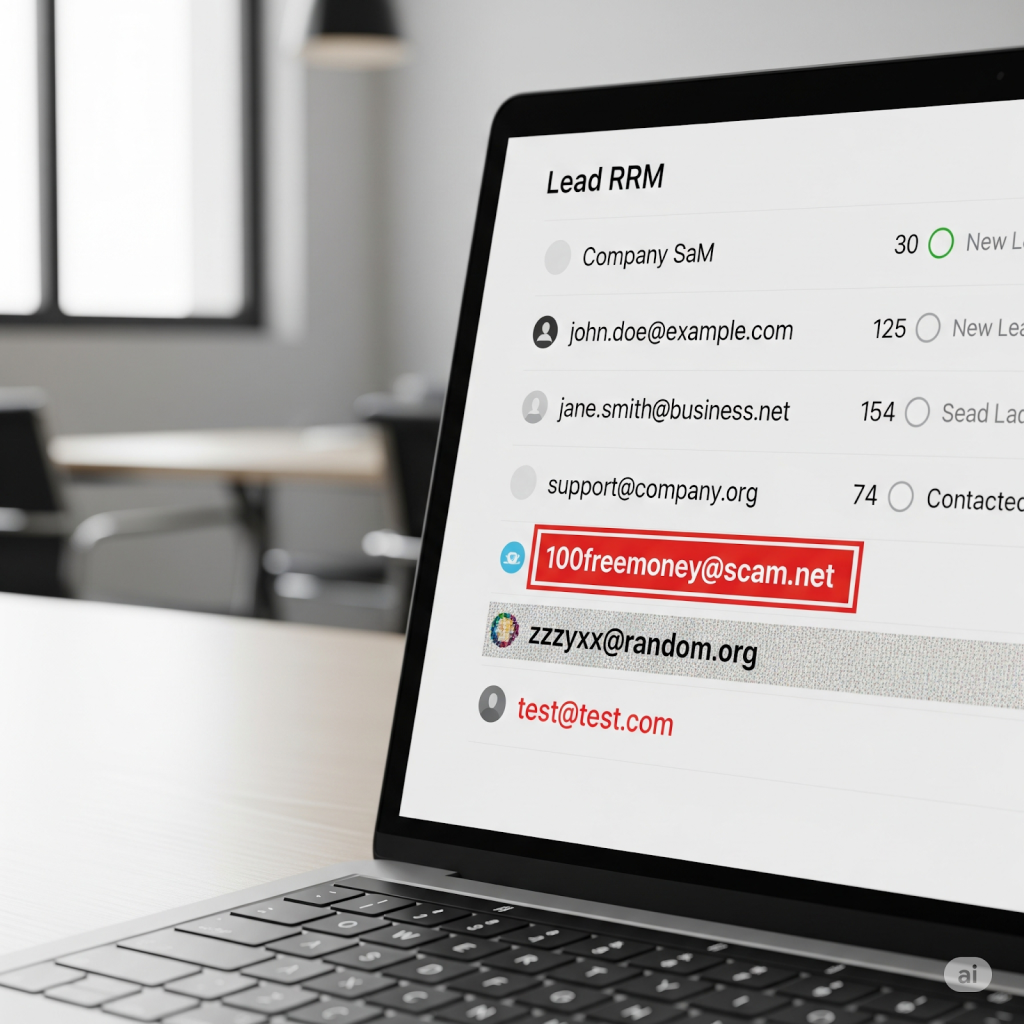The Hidden Cost of Spam in Your Funnel
A quiet leak is still a leak — and it’s costing you more than you think.
Let’s talk about the quiet things that sabotage your funnel.
Not bad copy.
Not boring CTAs.
Not even slow-loading pages.
I’m talking about spam.
Spam Is Sneaky, and That’s the Problem
It shows up looking like interest.
A filled-out form.
A downloaded whitepaper.
A “contact me” submission.
It gets piped into your CRM. It triggers automations. It makes your team think, “Hey, we’re getting leads!”
Except… you’re not.
You’re getting:
- 🪤 Junk data
- 🫥 Ghost leads
- ⏳ Hours lost chasing fake signals
And the worst part?
You don’t notice until it’s already distorted your funnel.
🧾 The True Cost of a Fake Lead
Let’s break this into numbers:
Every fake lead:
- Costs you time (to vet, clean, or ignore)
- Skews your analytics (so your decisions start with bad data)
- Wastes money (especially if you’re paying per lead or ad click)
But it also does something deeper:
It erodes trust in your funnel.
Sales teams start second-guessing lead quality.
Marketing starts wondering if the top-of-funnel is broken.
Leadership starts pressuring for “better leads” — even when the traffic is fine.
⚠️ Spam Is Not Just a Nuisance — It’s a Funnel Distortion Field
Most teams treat spam like background noise: annoying, but manageable.
But imagine if 20% of your pipeline wasn’t real.
Imagine making decisions based on numbers you couldn’t trust.
And imagine your best lead — the one ready to buy — buried under 40 junk entries and never followed up with.
It’s not a stretch.
We’ve seen it happen.
🧠 The Problem With Most Anti-Spam Tools
Here’s what typically happens:
- You slap on a CAPTCHA
- It filters some junk
- But your users hate it
- Bots get around it anyway
- Real people start dropping off
You’re stuck between two bad choices:
- Keep the CAPTCHA and lose real leads
- Remove it and get buried in spam
There’s a better way.
One client we worked with had 79% spam submission on a major funnel.
After making a quiet shift to Spamkill — no UX disruption — their spam rate dropped to under 1%.
Lead quality improved.
Sales calls got easier.
The marketing team started trusting their own numbers again.
What changed?
Not the copy. Not the design. Just the way they filtered what shouldn’t get in.
✨ The Clean Funnel Effect
Imagine this:
- Every lead is real
- Every follow-up is relevant
- Your analytics dashboard tells the truth
- Your CRM works like it should
No puzzles.
No CAPTCHA boxes.
No wondering if “Jane from @yandex.ru” really wants your enterprise software.
Just clean, confident growth.
🪄 Try This Before Your Next Campaign
Here’s your quick audit:
- Open your CRM. Look at the last 50 leads. How many are obviously junk?
- Check your attribution dashboards. Are the numbers stable—or weirdly inflated?
- Talk to sales. How often are they chasing cold leads that go nowhere?
If the answers make you wince — it’s time to fix the leak.
Start by rethinking what gets through your form in the first place.
👀 Final Thought
Spam may not scream like a broken ad campaign.
It doesn’t throw an error message.
It just slowly drains time, energy, and trust from your team.
But plug that leak — and you’d be surprised how much clarity flows back into your business.
Want to know how others fixed their funnel without adding friction?
Let’s just say it didn’t involve street signs or blurry CAPTCHA boxes.
It started with a quiet switch—no fanfare, just results.

